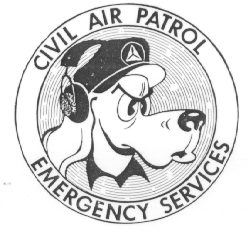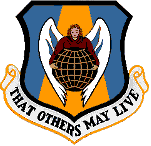
To compliment the air crews you must have a ground search team. Air crews can identify possible locations of targets, but it takes the ground teams to check them out. The ground crews consist of both cadets and senior members.
DISASTER RELIEF
Civil Air Patrol members assist authorities after disasters strike. They airlift blood, medical supplies and civil or releif officials to disaster areas.
Air surveillance as well as air evacuation of the stranded, sick or injured is another way in which CAP volunteers assist after disasters.

AIR FORCE RESCUE COORDINATION CENTER

FEDERAL EMERGENCY MANAGEMENT AGENCY

PENNSYLVANIA EMERGENCY
MANAGEMENT AGENCY

AMERICAN RED CROSS